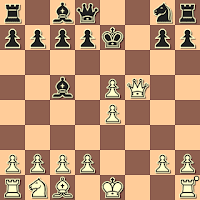If you search for "Jerome Gambit" in the YouTube videos, you will eventually come across a video titled "THE JEROME GAMBIT || BAKA MITAI VARIATION", which might require a bit of upacking.
The chess game Ftmean - adicopcea, 10 0 Chess.com, 2021 (1-0, 16), a Semi-Italian Jerome Gambit, unfolds to the tune of a romantic Japanese language song, "Baka Mitai", as humorous graphics take the place of different chess pieces during play.
"Baka Mitai" means "like a fool", which could refer to whoever plays the Jerome Gambit - or, more likely, to whoever loses to it. (Given the note at the end, "Lol... get rekt noob", a gamer taunt to a beginner who has just been crushed, pehaps the latter.)
A few helpful quotes from usgamer.net
The Baka Mitai meme features a Japanese song from the popular video game series Yakuza. ... The deepfake for this meme is created by animating an image with the motion of a video using first order motion model technology...
You might recently have heard of Baka Mitai, a new deepfake trend that has historical and fictional characters alike singing the song from Yakuza 0. ..Deepfake technology has really taken off over the past few years, to put it lightly. Recently though, a new trend has evolved in which users get a fake or real person to sing Baka Mitai using lip syncing technology.
It is interesting, for example, to watch the Marvel villain Thanos singing "Baka Mitai", but I prefer the version of Disney's Goofy, myself.
The game itself has some twists and turns. By all means, watch the video, but here are the moves as well.
Ftmean - adicopcea
10 0 blitz, Chess.com, 2021
1.e4 e5 2.Nf3 Nc6 3.Bc4 h6
The Semi-Italian Opening.
4.O-O Bc5 5.Bxf7+
The Semi-Italian Jerome Gambit.
A couple of weeks ago, in a different context, I raised the question "Why?", which can apply here as well: Why does White sacrifice his Bishop in the current game ?
If you look at the recommended line of play, according to Stockfish 14.1, you can get an idea of what Ftmean was avoiding: 5.c3 Bb6 6.d4 exd4 7.cxd4 d6 8.Nc3 Nge7 9.Be3 O-O 10.Qd2 Ng6 11.h3 Kh7 12.Rae1 Nce7 13.Bd3 f5 14.d5 Kg8 15.Bxb6 axb6 16.exf5 Nxf5 17.Bb1 Bd7 18.a3 Qf6 19.Ne4 Qf7 20.Ng3 Nge7 - sure, White is better, but this is not the stuff of excitment. Also, this is a blitz game, and mistakes in the defense are likely to appear.
5...Kxf7 6.Nxe5+ Nxe5 7.Qh5+ g6
Perhaps the first move that came to mind - Block the check! - but probably 7...Kf8 and 7...Ke6 were a bit stronger.
8.Qxe5 Bd6
Attack the Queen! Understandable in a club blitz game, but the losing move, as Black will be down the exchange and two pawns.
9.Qxh8 Bxh2+
Creative play in dire circumstances. Black identifies a way to keep White's Queen trapped - for now.
10.Kxh2 Qh4+ 11.Kg1 Nf6
12.d3 g5 13.Nc3 c6 14.f4
With plans to open the deadly f-file.
14...b5
Will there be time for ...Bb7, winning the enemy Queen?
15.fxg5 hxg5 16.Qxf6+ Black resigned
Checkmate is on its way.

































